By the turn of the 21st century, the Iberian lynx was on the verge of extinction, as only about 100 individuals survived in two isolated subpopulations in Andalusia. Conservation measures were implemented since 2002 which included improving habitat, restocking of rabbits, translocating, re-introducing and monitoring Iberian lynxes. By 2012, the population had increased to 326 individuals.[6]
It is a monotypic species and is thought to have evolved from Lynx issiodorensis.
Taxonomy

Felis pardina was the scientific name proposed by Coenraad Jacob Temminck in 1827 who described skins of Iberian lynxes that were killed in the area of the Tagus river in Portugal and were traded in Paris and London.[7] It is a monotypic species.[8]
Evolution

The Iberian lynx is thought to have evolved from Lynx issiodorensis.[9] The earliest fossil remains of the Iberian lynx date to the Early Pleistocene.[1]
Characteristics
The Iberian lynx has a short bright yellowish to tawny coloured spotted fur. The spots vary in shape and size from small round to elongate. They are arranged in lines and decrease in size from the back towards the sides.[10] Its head is small with tufted ears and a ruff. Its body is short with long legs and a short tail. Head and body length of males is 74.7–82 cm (29.4–32.3 in) with a 12.5–16 cm (4.9–6.3 in) long tail and a weight of 7–15.9 kg (15–35 lb). Females are smaller with a head-to-body-length of approximately 68.2–77.5 cm (26.9–30.5 in) and a weight of 9.2–10 kg (20–22 lb).[11]
Distribution and habitat
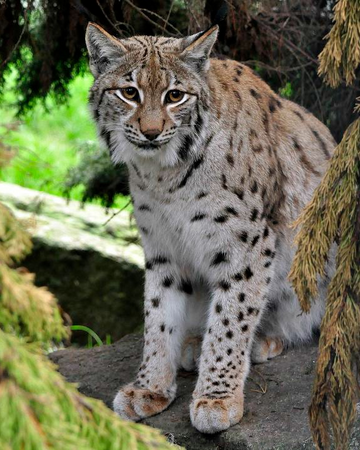
The Iberian lynx was once present throughout the Iberian Peninsula and southern France. In the 1950s, the northern population extended from the Mediterranean to Galicia and parts of northern Portugal, and the southern population from central to southern Spain.[12] Populations declined from 15 subpopulations in the 1940s to only two subpopulations in the early 1990s, most noticeably in Montes de Toledo and Sierra Morena. Before 1973, it was present in Sierra de Gata, Montes de Toledo, eastern Sierra Morena, Sierra de Relumbrar and coastal plains in the Doñana area. Between the early 1960s and 2000, it has lost about 80% of its former range.[13][14] It is now restricted to very limited areas in southern Spain, with breeding only confirmed in Sierra Morena and Doñana coastal plains.[3]
Fossil remains indicate that the Iberian lynx had a wider range during the Late Pleistocene and Holocene. Five lynx remains found in Arene Candide in northern Italy date to about 24,820–18,620 before present. One specimen found in Cabias cave in southern France was radiocarbon dated to 3780±90 before present.[15]
The Iberian lynx prefers heterogeneous environments of open grassland mixed with dense shrubs such as strawberry tree, mastic, and juniper, and trees such as holm oak and cork oak. It is now largely restricted to mountainous areas.[citation needed]
Behaviour and ecology
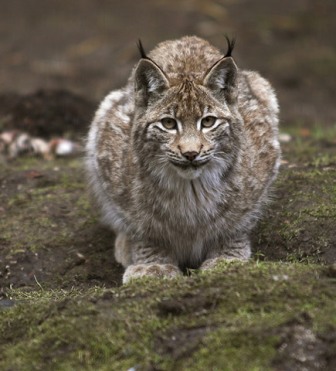
The Iberian lynx marks its territory with its urine, scratch marks on the barks of trees, and scat. The home ranges of adults are stable over many years.[11] Camera trapping surveys in the eastern Sierra Morena Mountains between 1999 and 2008 revealed that six females had home ranges of 5.2–6.6 km2 (2.0–2.5 sq mi). Four males in the area had home ranges of 11.8–12.2 km2 (4.6–4.7 sq mi).[16]
Diet and hunting
The Iberian species has low adaptability—it continued to rely heavily on rabbits (75% of its food intake) despite the latter's repeated population crashes due to myxomatosis and rabbit haemorrhagic disease.[5]
It competes for prey with red fox (Vulpes vulpes), Egyptian mongoose (Herpestes ichneumon) and European wildcat (Felis silvestris). Also, it often kills other smaller carnivores such as red fox, Egyptian mongoose and common genet (Genetta genetta).[22] The species is solitary and hunts alone; it will stalk its prey or lie in wait for hours behind a bush or rock until the prey is sufficiently close to pounce in a few strides.
Reproduction
Iberian lynx cub
The kittens become independent at 7 to 10 months old, but remain with the mother until around 20 months old. Survival of the young depends heavily on the availability of prey species. In the wild, both males and females reach sexual maturity at the age of one year, though in practice they rarely breed until a territory becomes vacant; one female was known not to breed until five years old when its mother died. The maximum longevity in the wild is 13 years.[23][24]
Siblings become violent towards one another between 30 and 60 days, peaking at 45 days. A kitten will frequently kill its littermate in a brutal fight. It is unknown why these episodes of aggression occur, though many scientists believe it is related to a change in hormones when a kitten switches from its mother's milk to meat. Others believe it is related to hierarchy, and "survival of the fittest".
Difficulty in finding mates has led to more inbreeding, which results in fewer kittens and a greater rate of non-traumatic death.[25] Inbreeding leads to lower semen quality and greater rates of infertility in males, hindering efforts to increase the species' fitness.[26]
Threats
.jpg)
The Iberian lynx is threatened by habitat loss, road accidents and illegal hunting.[2] Habitat loss is due mainly to infrastructure improvement, urban and resort development and tree mono cultivation, which fragments the lynx's distribution. In the 20th century, rabbit diseases such as myxomatosis and hemorrhagic disease resulted in a dramatic decline of its main prey.[27] Illegal traps set for rabbits and foxes were leading causes for lynx fatality in the 1990s.[28] Every year, several Iberian lynxes die when trying to cross highways with heavy traffic.[3] In 2013, 14 Iberian lynxes died on roads, and 21 in 2014.[29][30]
In 2007, several individuals died of feline leukemia.[31][32]
In 2013, it was reported that the Iberian lynx possesses antibiotic resistant bacteria within its digestive tract, which may lead to more dangerous and difficult-to-treat infections and decrease the cat's fitness.[33] A 2013 study suggests climate change may threaten the Iberian lynx species due to their inability to adapt well to a climate change or it may lead them to relocate to areas that have a more suitable climate but fewer rabbits, increasing mortality.[5]
Conservation
Iberian lynx
Conservation measures include restoring its native habitat, maintaining the wild rabbit population, reducing unnatural causes of death, and releasing captive bred individuals.[34] The Spanish National Commission for the Protection of Nature endorsed the Iberian Lynx Ex Situ Conservation Breeding Program to serve as a "safety net" by managing the captive population and also to "help establish new Iberian lynx free-ranging populations through reintroduction programmes." Before release of captive-bred cats, their natural habit may be simulated to prepare them for life in the wild.[34] A 2006 study used a non-intrusive monitoring system involving cameras to monitor the demographics of both lynxes and rabbits residing in Sierra Morena. Supplemental food sources could be provided if wild rabbits suffered a decline.[35]
Management efforts are being developed to conserve and restore the animal's native range.[36] Officials intending to release captive-bred lynx look for areas of appropriate habitat, rabbit abundance, and acceptance by the local human population.[37] About 90 million euros was spent on various conservation measures between 1994 and 2013.[38] The European Union contributes up to 61% of funding.[39][40]
Reintroduction programme
Graph showing Iberian lynx population in Spain, 1960–2007
On 26 November 2014, 8 Iberian lynxes were released into Toledo, Spain; one of them traveled near Madrid, the first time in 40 years.[47]
The presence of Iberian lynxes in Portugal, particularly in the south, has been verified.[48] In 2014, the Institute for Nature Conservation and Forests signed contracts securing 2,000 hectares of land for Portugal's reintroduction project.[49][50][51] On 16 December 2014, a pair of Iberian lynx was released into Guadiana Valley Natural Park near Mértola, Portugal.[52] On 7 February 2015, another pair was released into the park, but the female was later found dead on 12 March 2015 after being poisoned in Mértola.[53] The last pair of captive-bred Iberian lynxes were released into Guadiana Valley Nature Reserve on 12 May 2015.[54] By the end of 2015 there were 400 lynx on the Iberian peninsula, the vast majority in Andalusia, in southern Spain, but with smaller new populations in the hills near Toledo, in Extremadura (south-western Spain) and in southern Portugal.[55]
The reintroduction of Iberian lynx in Portugal has been a success; from 17 animals that were reintroduced, 12 have already established territories.[56]
Since a 2007 outbreak of feline leukemia virus (FeLV), wild lynxes are tested periodically for possible disease. September–December 2013 samples were negative for FeLV but one male became the first of his species to test positive for feline immunodeficiency virus (FIV) and was placed into quarantine.[57]
Captive breeding
The Iberian Lynx CNRLI reproduction centre near the village of Vale Fuzeiros (mun. of Silves, Portugal)
There were 14 surviving kittens in 2008 and 15 in 2009. In 2010, intense rain and health issues resulted in lower reproductive success—14 born, 8 surviving[63]—but the next year, breeding centers recorded 45 births with 26 surviving kittens.[64] In 2012, breeding centers in Portugal and Spain reported a total of 44 survivors from 59 births,[64] while 2013 saw a total of 44 survivors out of 53 born.[65] In 2017, the total population of Iberian lynx reached 475 specimens.[66]
In March 2013, it was reported that Iberian lynx embryos and oocytes had been collected and preserved for the first time. They were collected from Saliega and another female—both sterilized and retired from the breeding program—by Berlin's Leibniz Institute for Zoo and Wildlife Research and stored in liquid nitrogen at the Museo Nacional de Ciencias Naturales in Madrid for possible future breeding.[67] In July 2014, the MNCN-CSIC announced they had produced sperm cells from the testicular tissue of sexually immature lynx.[68]
Iberian lynx can be observed in captivity only at the Jerez Zoo,[69] since December 2014 at the Lisbon Zoo,[70] and since July 2016 at the Madrid Zoo.[71] The Jerez animals integrate the breeding program, the two Lisbon lynxes were formerly in the Portuguese breeding center but are no longer suited for the program (the female had multiple failed pregnancies and the male has a form of epilepsy),[72] and the two Madrid lynxes were equally retired from the breeding program for not being suited for reproduction.
Genetic research
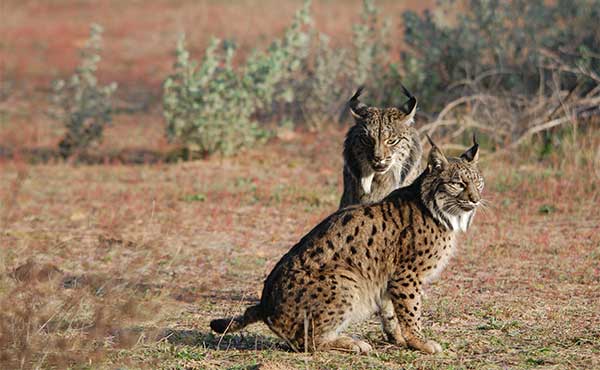
The genetic diversity of the Iberian lynx is lower than in any other genetically impoverished felid, which is possibly a consequence of fragmentation and isolation of population units.[73] Iberian lynxes in Doñana and Andujar differ genetically at microsatellite markers. Samples collected in Doñana exhibited a high degree of inbreeding as this unit was isolated for a long time.[73]
Binomial name
Lynx pardinus
(Temminck, 1827)



DISTRIBUTION OF IBERIAN LYNX 2015
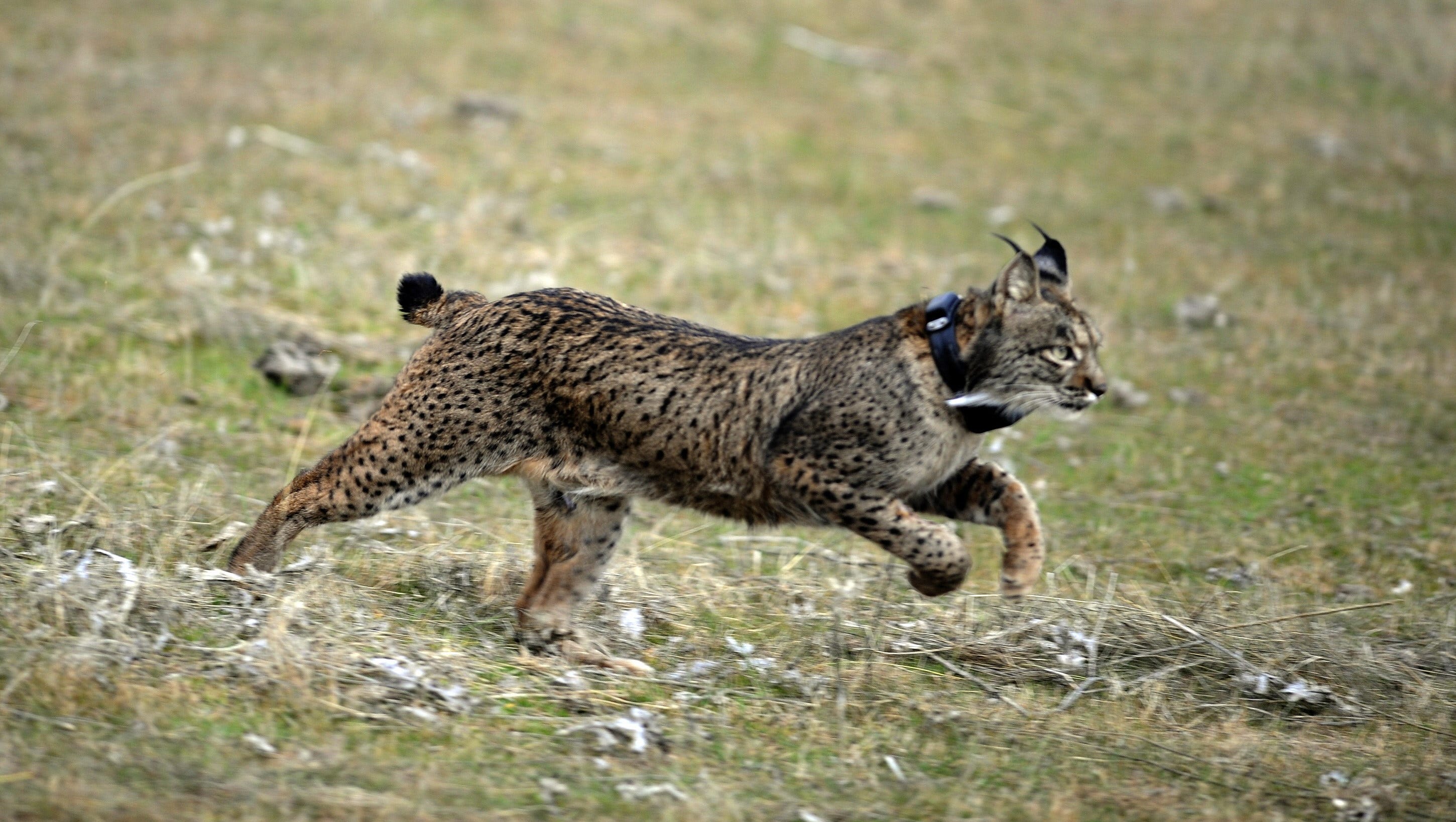
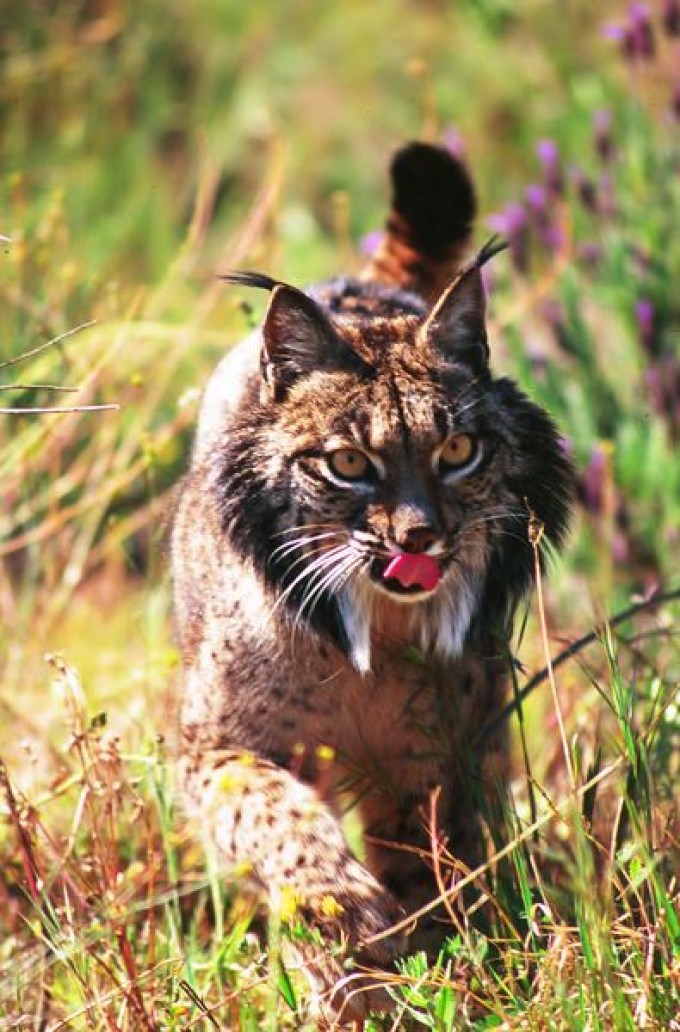
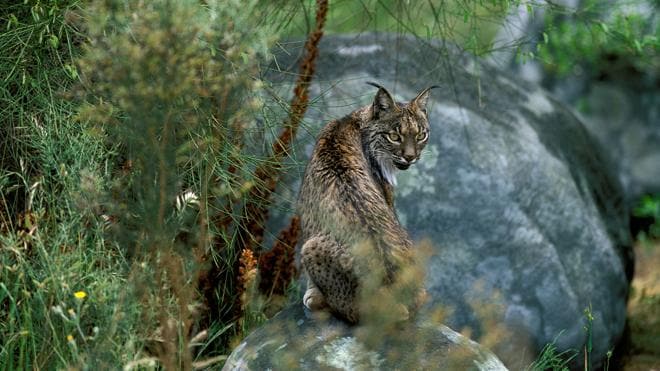


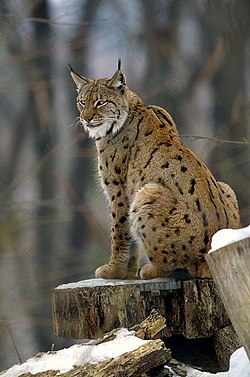











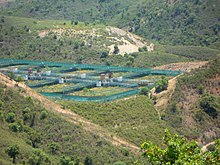

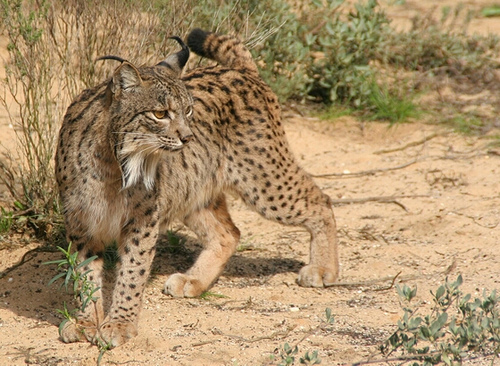
No comments:
Post a Comment
Note: Only a member of this blog may post a comment.